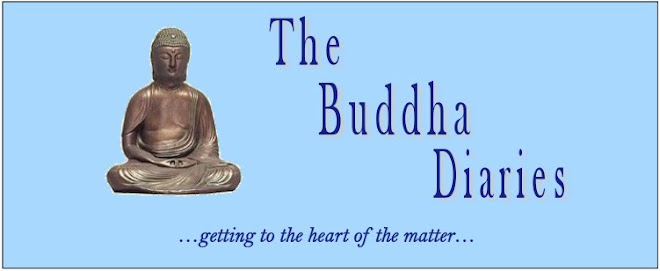First, then, the exhibition on the main floor, a fine selection from the museum's permanent collection, enhanced by a handful of works on loan from private collections. I'm not sure how things eventually turned out, but I do recall that at the time of the short-lived merger effort, some part of the LAM collection was acquired by, or transferred to OCMA. Has it all been restored? I don't know. But certainly from what remained intact the recently appointed Executive Director, Dr. Malcolm Warner--attracted here from the prestigious Kimbell Art Museum in Fort Worth--has put together a fine exhibition that spans the history of California art. The Laguna Beach Impressionists are well represented--with one particularly stunning sunset painting by Frank Cuprien--as is the social realism of the pre-WWII period. The large, central gallery is devoted to the work of more recent artists, from hard-edge abstraction (one wall brings John McLaughlin, Lorser Feitelson and Helen Lundeberg together as impressive neighbors) to light-space work (a brilliant painting by Helen Pashgian) and finish fetish--in a colorfully idiosyncratic sculptural piece by DeWain Valentine...
 |
| DeWain Valentine |
Tasty...
And--perhaps the piece de resistance of the exhibition--a gallery devoted to the paintings of John Altoon and a magnificent, massively-scaled ceramic wall relief by John Mason...
 |
| John Mason |
What Dr. Warner has brought to the museum--along with the keen eye evidenced by his selection of works for this exhibition--is clearly an intention to (dare I say?) professionalize its operation. Past exhibitions at the museum have tended to suffer from being a bit of a mish-mash, with works crowded too closely together. The design of the smaller galleries, leading inward in ever more restricted spaces, can easily promote a sense of claustrophobia. The current installation is respectful of the art works' need for breathing space; it feels crisp, clean, its choices suggesting a nice clarity of purpose and historical intelligence.
The two concurrent exhibitions are substantial in themselves. On the upper floor, an installation of photographs by George Hurrell, a one-time Laguna Beach resident who moved to Hollywood and achieved fame as the photographer of the stars. A master of chiaroscuro...
 |
| George Hurrell, "Jean Harlow" |
... he created portraits that are at once glamorous--de rigueur!--and revealing; they capture not only the movie-star good looks, but also the often moody individuality of his sitters, the isolation and melancholy that frequently accompany fame. Also fascinating are his portraits of early twentieth Laguna Beach artists like William Wendt and Frank Cuprien, his contemporaries and friends when he first came west to live here.
I realized only late in my visit to ex pose, the exhibition of Allison Schulnik's work in the museum's lower level, that I had seen this artist's work a few years earlier; back then, she was doing oil paintings, mostly of flower arrangements--the canvases so thick with globs and gouged paths of paint you'd almost expect the weight to bring them crashing off the wall. I have to admit that I have not followed the work since then, though I now gather that the artist has amassed an impressive list of exhibition sites and critical reviews, along with an equally impressive following of admirers. Having first abandoned her ambitions as a dancer, years ago, due to injury, Schulnik turned first to video and film and only later to painting and sculpture. The results of her recent work together constitute a knock-out show.
Heading down the museum stairs, the visitor first arrives in a small, darkened space, where Schulnik's videos are running. It's compelling viewing. Working with her bizarre, animated wet-clay figures that she keeps in constant, restless motion, she choreographs these creatures of her imagination through an endless, unpredictable dance of form and color, entertaining the eye and engaging the mind with "stories" that blend sly references to myth and children's fairy tales with sheer, deeply personal, and often profoundly unsettling whimsy...
... still inches deep in viscous oil paint, but now enriched with figure and narrative from the same source of childhood storybook and dreamland--the place where elves, hobgoblins, leprechauns and ogres coexist in dark, animated forests and enchanted gardens. It's the world that scared us all as little kids, now reintroduced with no less power to the adult imagination. Did I mention color? It's as unabashed as the brushwork in its cheerful, unwavering assault on the viewer's eye. At the far end from cool, this work is startling in its bold, uncensored originality; at once highly sensual and even aggressively seductive in its appeal, it is at the same time filled with the kind of hidden threat and danger that makes you realize that, beyond surface appearances, you're being confronted with the dark side of the imaginative life.
Kudos to Laguna Art Museum for all three of these shows. I trust that readers in the Orange County area will not miss this opportunity to catch up with the museum's latest installations.



No comments:
Post a Comment